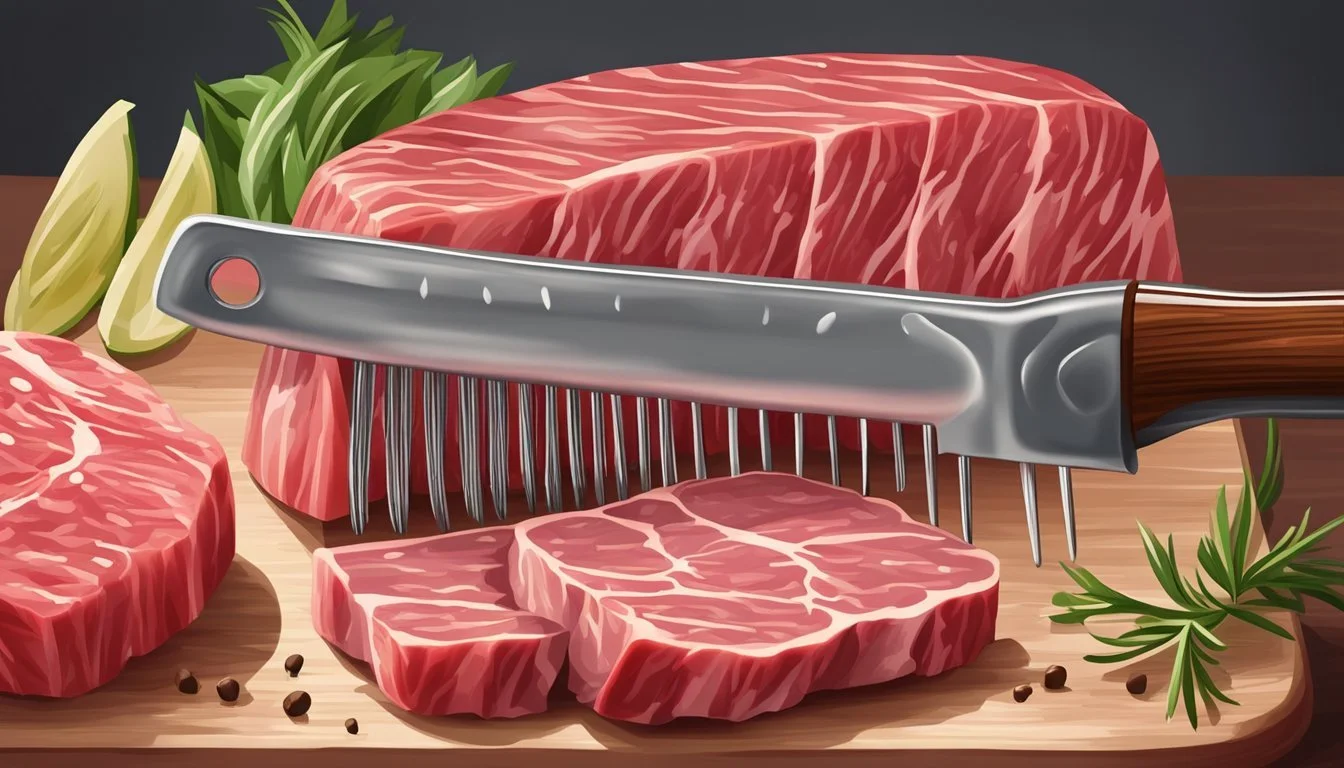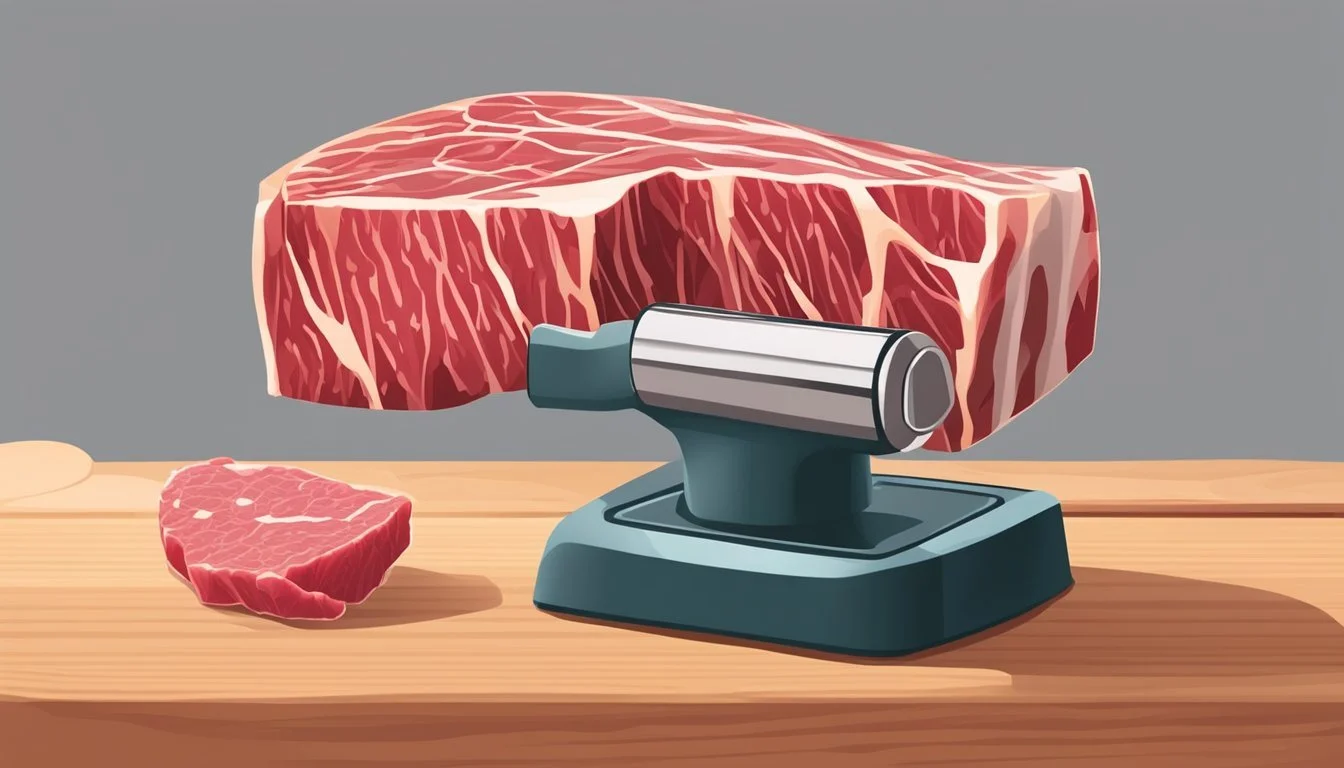How to Use a Meat Tenderizer for Perfect Cuts
Mastering the Art of Tender Meat
Achieving the perfect tenderness and flavor in meat can have a significant impact on the quality of a meal. The art of tenderizing meat is essential for cuts that can be tough and difficult to chew if not prepared properly. Meat tenderizer tools play a crucial role in this process, breaking down the muscle fibers and connective tissues that make certain cuts tough. They also provide an avenue for better absorption of marinades and seasonings, which enhances the overall flavor profile of the meat.
Tenderizing meat isn't just about making it easier to eat; it's also about allowing the meat to cook more evenly, contributing to a better textural experience with every bite. There are various methods to tenderize meat, including using a dedicated meat mallet or chemical tenderizers. Physical methods like pounding can be quite effective, as it flattens the meat to a uniform thickness, ensuring even cooking and allowing for quicker preparation times.
Appreciating the nuances of meat tenderization is key for anyone looking to refine their culinary skills. Knowing when and how to tenderize meat can transform an ordinary dish into an extraordinary one, making flavors more pronounced and the meat melt-in-your-mouth tender. Whether preparing a steak or a stew, understanding the tenderizing process is vital for achieving the desired outcome in a dish.
Understanding Meat Tenderization
Proper tenderization transforms various cuts of meat into succulent, flavorful dishes. This section explores how different meats react to tenderization, the relationship between muscle fibers, connective tissues, and the impactful role of natural enzymes.
Types of Meat and Their Textures
Different meats possess unique textures due to their specific muscle fibers and marbling. Beef cuts such as flank steak, skirt steak, and brisket have dense muscle fibers and pronounced connective tissues, requiring careful tenderization. Pork and lamb often have a finer texture but can still benefit from the tenderization process. Poultry typically has tender breast meat but tougher leg muscles.
Beef: Tougher cuts like shank and hanger steak.
Pork: Generally has a softer texture but can include tougher cuts like the shoulder.
Lamb: Tends to have a more delicate texture, with cuts like the shank that may need tenderizing.
Poultry: Chicken breast is leaner, while thighs and wings have more connective tissues.
Muscle Fibers and Connective Tissues
Muscle fibers and connective tissues are the key determinants of a meat's tenderness. Collagen, a significant component of connective tissue, makes certain cuts, such as the beef brisket or shank, naturally tough. Tenderizing physically breaks down these tough muscle fibers and connective tissues to make the meat more palatable.
Muscle Fibers: Long strands of protein that contract and relax to cause movement.
Connective Tissue: The collagen-rich networks that connect muscle fibers to each other and to bones.
Role of Enzymes in Tenderization
Enzymes such as papain from papaya, bromelain from pineapple, and actinidin from kiwi catalyze the breakdown of proteins in the meat, softening it. These enzymes work by targeting and cleaving the proteins within muscle fibers and connective tissues, such as collagen, which holds the muscle fibers together.
Papain: Extracted from papaya, it's commonly used in powdered meat tenderizers.
Bromelain: Found in pineapples, it's effective for tenderizing meat without turning it mushy.
Actinidin: Kiwi-derived enzyme that is adept at breaking down tough proteins in meat.
Physical Meat Tenderization Techniques
Physical meat tenderization is a fundamental kitchen technique that helps turn tough cuts of meat into succulent, easy-to-eat dishes. Through these methods, one can enhance the texture and improve the overall eating quality of meat.
Mechanical Tenderization Methods
Pounding: A traditional and effective way to tenderize meat, pounding is accomplished using a meat mallet. This tool often features two sides; one flat side for thinning cutlets, and a textured side designed to break down the tough muscle fibers and connective tissues.
Using a Meat Mallet:
Flat Side: Used for creating thinner pieces of meat that cook quickly.
Textured Side: Helps in disrupting the tougher structures within the meat.
If a meat mallet is not available, a rolling pin can serve as a substitute. The key is to evenly pound the meat to ensure uniform thickness and tenderness.
Cutting and Scoring
Knives play an essential role in pre-tenderization preparation. Making shallow cuts or scoring in a crisscross pattern across the surface of tough meats can aid in the tenderizing process.
Scoring:
Purpose: Not only does this method assist in tenderizing, but it also allows for better penetration of seasonings, leading to a more flavorful dish.
Technique: With a sharp knife, slice into the surface of the meat, careful not to cut too deep.
For exceptionally tough cuts, one might use a technique called butterflying, where the meat is cut almost in half, leaving it attached on one side, then opened out to form a thinner piece.
In summary, these specific physical tenderization techniques, when applied correctly, can make even the toughest cuts of meat more palatable and enjoyable.
Chemical Meat Tenderization Methods
Chemical tenderization involves using substances that weaken muscle fibers and connective tissues to enhance meat tenderness. This process typically leverages the power of acids or enzymes to achieve the desired softness without physical pounding.
Marinating with Acids and Enzymes
Marinades often incorporate acidic liquids such as vinegar, wine, lime juice, or fruit juices like pineapple, apple, and citrus, which tenderize meat by breaking down its proteins. Additionally, dairy products like yogurt and buttermilk, or even beer, can be used due to their acidic properties. Enzymes found in certain fruits, specifically bromelain in pineapple, effectively tenderize meat. When marinating, the meat should soak in the mixture, typically containing an acidic component, for several hours, allowing the tenderizing agents to penetrate and act on the tissues.
Examples of Acid-Enzyme Marinades:
Pineapple juice with soy sauce and garlic
Wine and herb blend
Buttermilk with spices for chicken
Beer-based marinade for beef
Yogurt with mint for lamb
Using Tenderizing Powders
Meat tenderizing powders are commercially available products containing concentrated enzymes, such as papain from papaya or bromelain from pineapple. These powders can be sprinkled directly onto the meat's surface and work by breaking down protein fibers. Baking soda is another agent that can tenderize meat; however, it should be applied sparingly and rinsed off before cooking to avoid affecting the meat's taste. Tenderizing powders offer a quick and efficient solution for softening meats, especially tougher cuts.
Steps to Apply Tenderizing Powder:
Sprinkle powder evenly over the meat surface.
Gently press it onto the meat.
Allow sitting for the recommended time on the product label.
Salting as a Tenderizing Method
Salting is a time-tested method for enhancing the tenderness and flavor of meat. This process involves using salt as a solute, which can break down muscle fibers and protein strands. The technique can be executed by either dry brining or wet brining.
Proper Salting Techniques
Proper salting involves a careful application of either kosher salt or sea salt. Kosher salt is preferred due to its large grain size, allowing it to dissolve slowly and penetrate the meat effectively without over-salting. Sea salt, while similar in its effects, can vary in grain size and mineral content, sometimes offering a different nuance in flavor.
Dry Salting: The following steps should be adhered to when dry salting meat:
Pat the meat dry with paper towels.
Apply a generous amount of kosher or sea salt evenly over the surface.
Use fingers to work the salt into the meat, ensuring an even distribution.
Allow the meat to sit with the salt for at least one hour.
Wet Brining: When using a wet brining solution, one should:
Dissolve kosher or sea salt in water—proportions typically range from a tablespoon of salt per cup of water.
Submerge the meat completely in the brine solution.
Leave the meat in the brine for a period ranging from a few hours to overnight, depending on the size and type of meat.
Dry and Wet Brining
Dry brining is a simple yet effective method:
The meat is coated with a layer of salt and left to rest.
This rest period allows the salt to draw out meat juices, which then dissolve the salt, creating a natural brine.
Wet brining requires submerging meat in a salt-water solution:
The solute, salt, in the brine solution, works to tenderize and add moisture to the meat.
It infuses the meat with flavor and ensures that even lean cuts remain juicy after cooking.
Both methods have their merits and can be chosen based on the final desired texture and flavor of the meat.
Cooking Methods for Tender Meat
The art of transforming tough cuts of meat into tender, succulent dishes is mastered through the correct application of cooking methods. These techniques focus on the manipulation of temperature and time to enhance both flavor and tenderness.
Low and Slow Cooking Techniques
The low and slow cooking method involves cooking meat at low temperatures over a long period. This technique allows tough fibers in the meat to break down gradually, resulting in tender meat. Braising is a perfect example of this method; meat is first browned in a skillet and then simmered in liquid at temperatures around 275-325°F. It not only tenderizes but also infuses the meat with the flavors of the cooking liquid.
Utilizing High Heat When Appropriate
In contrast to slow cooking, high heat methods, such as searing meat in a skillet or grilling, can also achieve tenderness when used correctly. The key is to sear the meat quickly over high heat to brown and flavor the exterior, creating a delicious crust. This method is ideally suited for naturally tender cuts, and it's crucial to avoid overcooking, which can lead to toughening.
The Sous Vide Method
Sous vide is a precision cooking method where meat is vacuum-sealed in a bag and cooked in a water bath at controlled temperatures. This technique ensures even cooking and allows tough cuts to become tender without the risk of overcooking. Temperatures are generally kept lower than traditional cooking methods, typically in the 130-160°F range, depending on the desired level of doneness.
Velveting with Cornstarch
Velveting is a Chinese cooking technique that involves coating meat in a mixture of cornstarch, egg whites, and sometimes rice wine or soy sauce before cooking. The cornstarch creates a barrier that locks in juices and prevents the meat from becoming tough. This method is commonly used in stir-fry dishes, where meat is cooked quickly over high heat, resulting in tender, flavorful bites.
Practical Tips for Home Cooks
When using a meat tenderizer, home cooks can achieve perfectly tender cuts with simple, budget-friendly techniques. To begin, they should select the proper tool—a meat mallet or a blade tenderizer works efficiently. Tenderizing meat not only makes it softer but can also enhance the flavor, as it allows for deeper penetration of seasoning and marinades.
Preparation:
Meat should be placed on a sturdy surface, ideally on a cutting board much larger than the meat itself. It’s helpful to cover the meat with plastic wrap or place it in a plastic bag to avoid splattering. This step also helps to maintain cleanliness.
Mechanical Tenderizing:
Use a meat mallet, and alternate between the flat and spiked sides.
Pound evenly, working from the center outward to the edges of the cut.
Marinating Tips:
Marinating plays a crucial role in tenderizing and flavoring the meat. Home cooks should consider using ingredients with an acidic base like citrus juices or vinegar, combined with oil and herbs, for an effective and savory marinade.
Marinate with Care:
Ensure meat is fully coated with marinade.
Allow it to sit, refrigerated, for several hours or overnight for maximum effect.
Budget-Friendly Advice:
Utilizing a tenderizer and a homemade marinade is cost-effective. Seasonings and ingredients for marinades are often already in a home cook’s pantry, negating the need for expensive pre-made solutions.
By adhering to these practices, home cooks ensure meat is not only tender but also optimally seasoned, enhancing the quality of their meals without stretching the budget.



